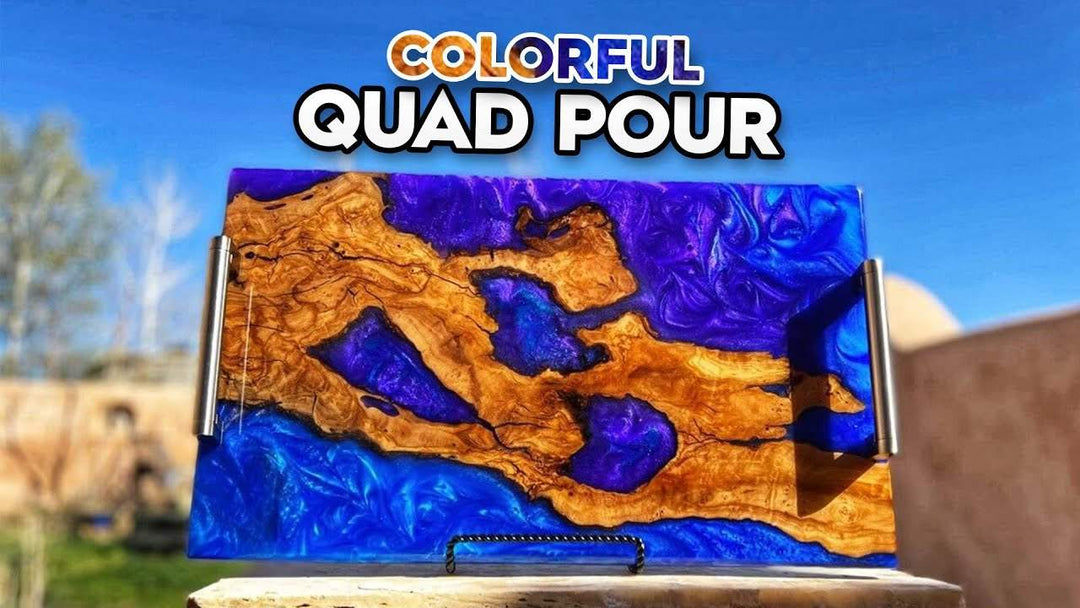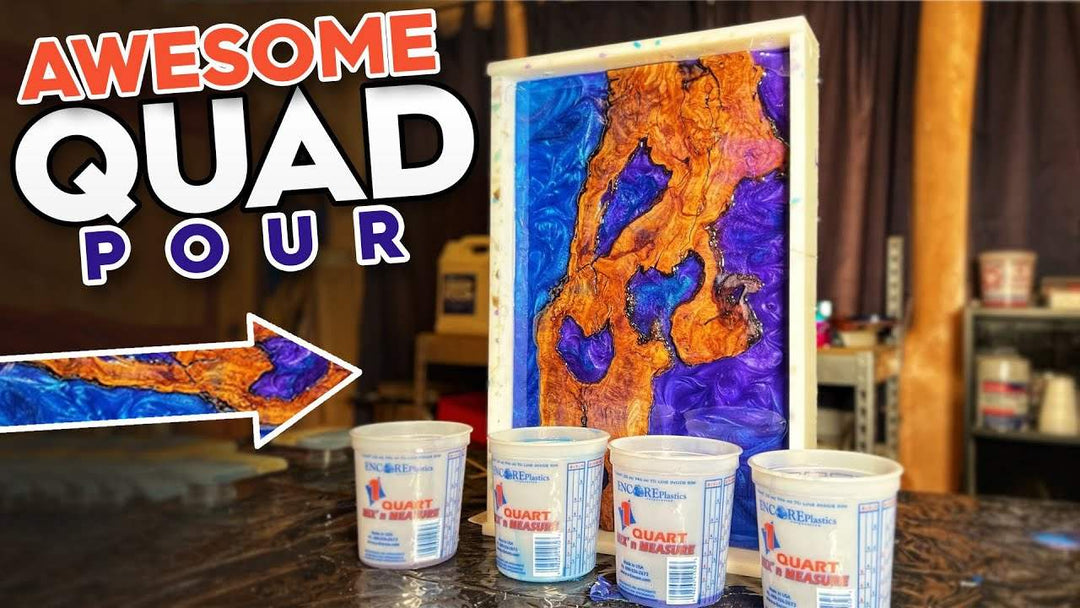
Step-By-Step Guide to Mixing, Pouring, and Curing Epoxy Resin for Perfection
At Upstart Epoxy, we utilize our ‘Mix, Pour, Cure’ (MPC) method whenever it’s time for a new project! In today’s tutorial, we’ll describe the method in detail so you can use it for your next epoxy creation!
Skill Level: Beginner/Intermediate/Expert
Estimated Working Time: 24-48 Hours
What You’ll Need:
- Upstart Epoxy Deep Pour Resin
- Upstart Epoxy Table Top Resin
- Upstart Epoxy Powdered Pigments Set
- Spreader
- Mixing Tool
- Containers
- Heat Gun/Blowtorch
Step 1: MIX
Mixing your resin sounds like a simple task, but it’s important to make sure you read the directions thoroughly before you get started. Be sure to read your kit for clear directions and measuring procedures! Once you’ve got your materials ready and your epoxy poured into a container, you’re ready to go.
Now it’s time to mix. You can use a mechanical mixer, a mixing vessel, or even your hand to mix to perfection. It’s all personal preference, but we recommend mixing by hand for any project that has depth in it. If you use a mechanical mixer, be sure to do it at low speed to prevent bubbles. Make sure to scrape the sides and the bottom of your mixing container to make sure all epoxy has blended properly.
It’s vital that you make sure your epoxy is properly mixed before you add in any mica powders. To know when your epoxy is ready for color to be added, watch closely as you mix- it’s time when the consistency goes from cloudy to clear. Now add all the colors you want!
Step 2: POUR
Removing bubbles from resin can be repetitive, but it’s necessary for amazing outcomes. After you finish mixing both parts of your epoxy, you can let it sit for about 5-10 minutes before use. During this time, many bubbles will rise to the surface and pop on their own.
You want your finished epoxy resin piece to have full, even coverage so that it looks its best! To achieve this, slowly pour the epoxy from a height of about 10-12 inches above your project. Gravity will do most of the work for you as far as spreading out the epoxy, but you can move the cup or vessel around to make sure all sides get coated fully.
It’s important that as you distribute the epoxy across the surface, you pay attention to the edges of your work. As it starts to level, make sure the epoxy is dripping all over the project.
Step 3: CURE
As you start your resin journey, you’ll notice that bubbles are inevitable. They start in the mixing process, and can return as the project cures. The best way to remove them is to use a blow torch or heat gun! Run the blow torch or heat gun over the surface of your project, keeping it a safe distance away.
Store your project in an area that is about 70 degrees at all times if you can, but make sure it’s not a cold or damp area. Low temperatures cause projects to cure incorrectly. Cover your project to prevent debris from falling into it as it cures.
Check your pieces regularly for bubbles as they cure, and remember you can always pop bubbles that rise up with heat. In our epoxy experience, we’ve noticed that the edges and corners of our projects take the longest to cure. Leave your piece in its mold for an extra day, just to make sure that when you demold, the project is ready to be planed, sanded, and can take anything you throw at it!




